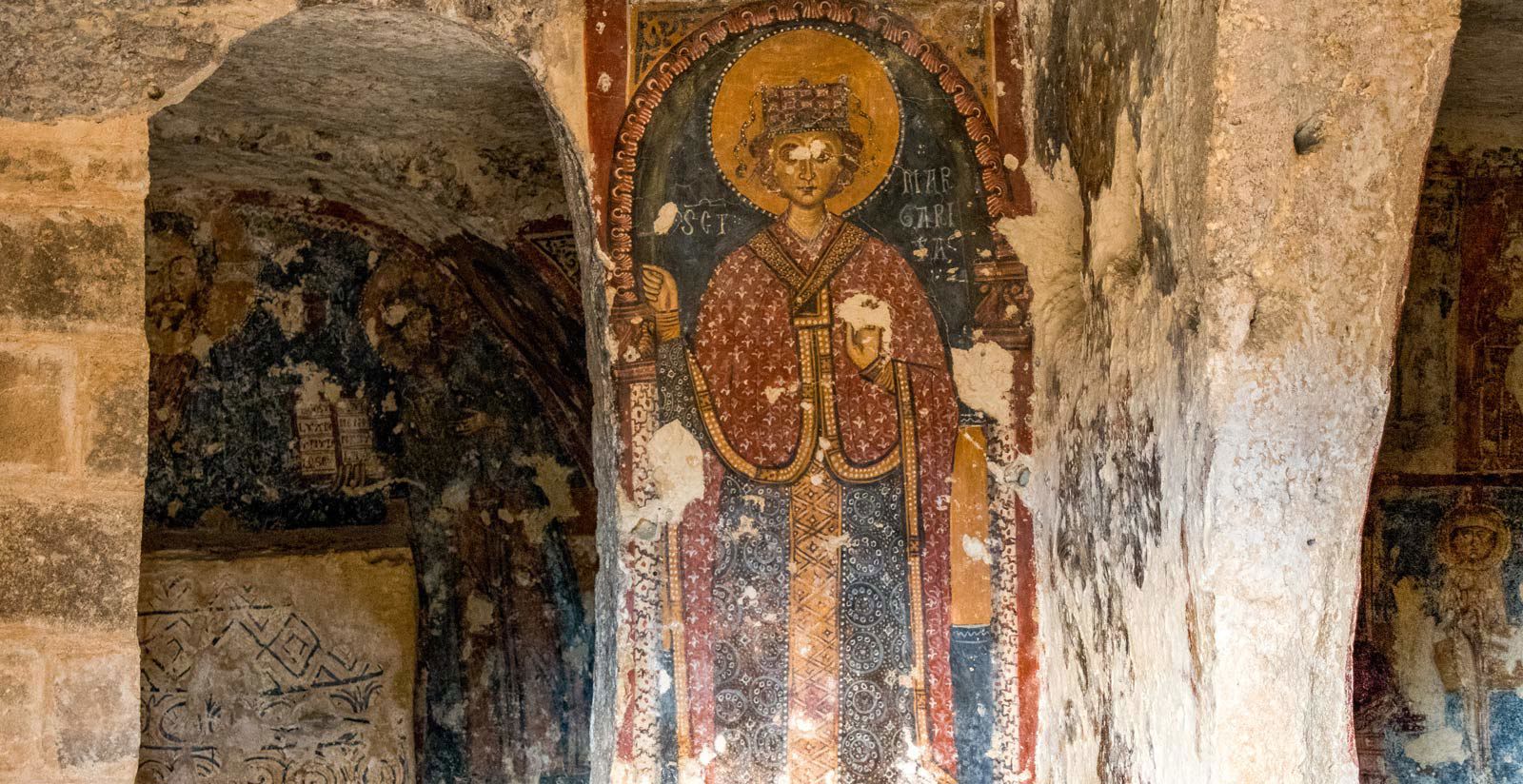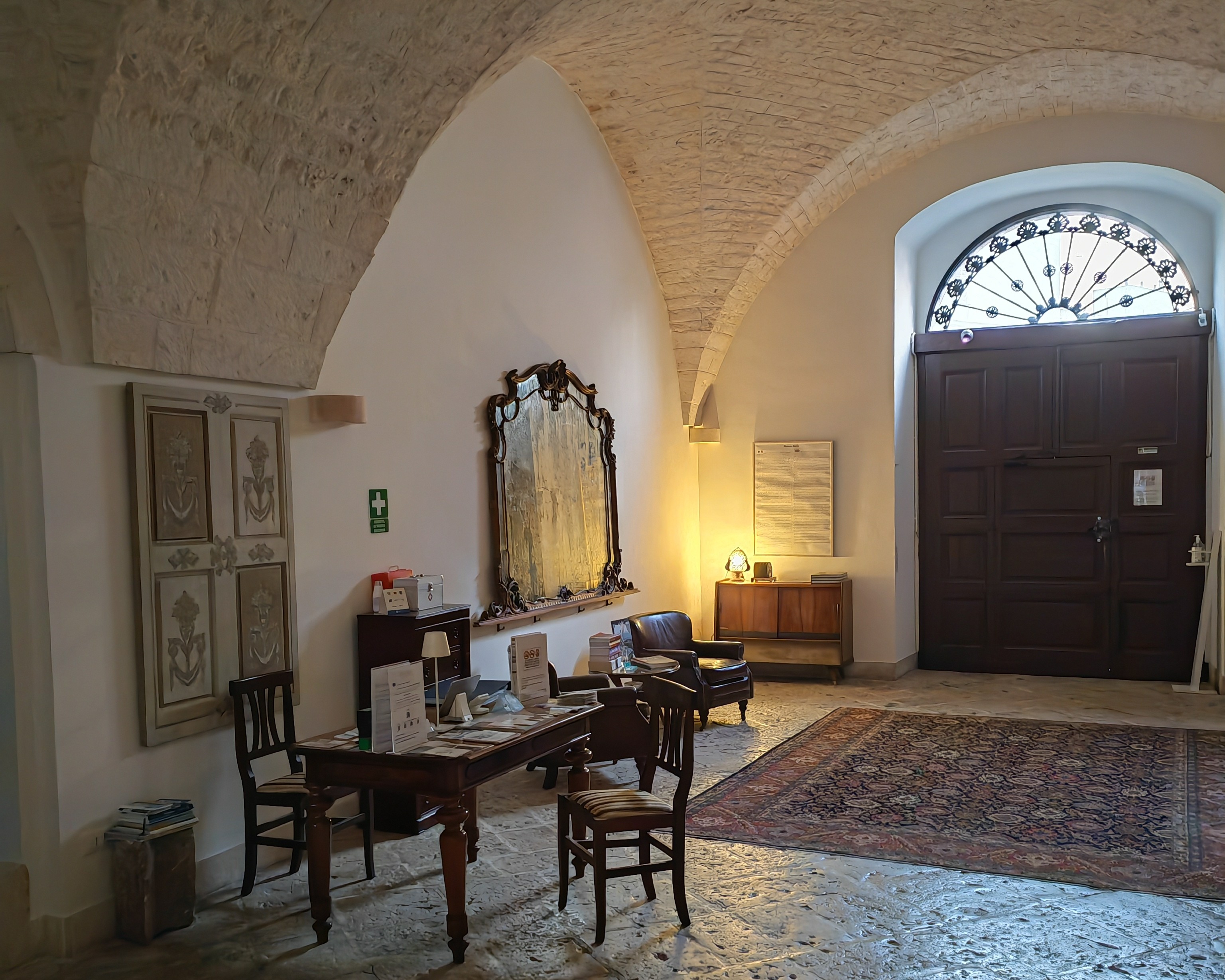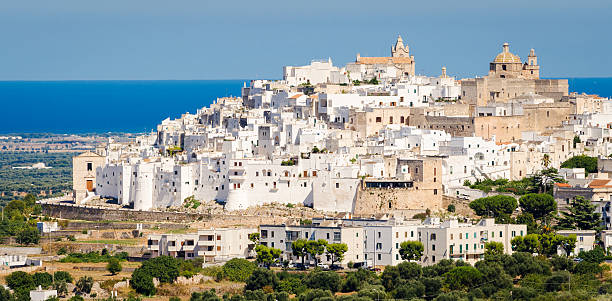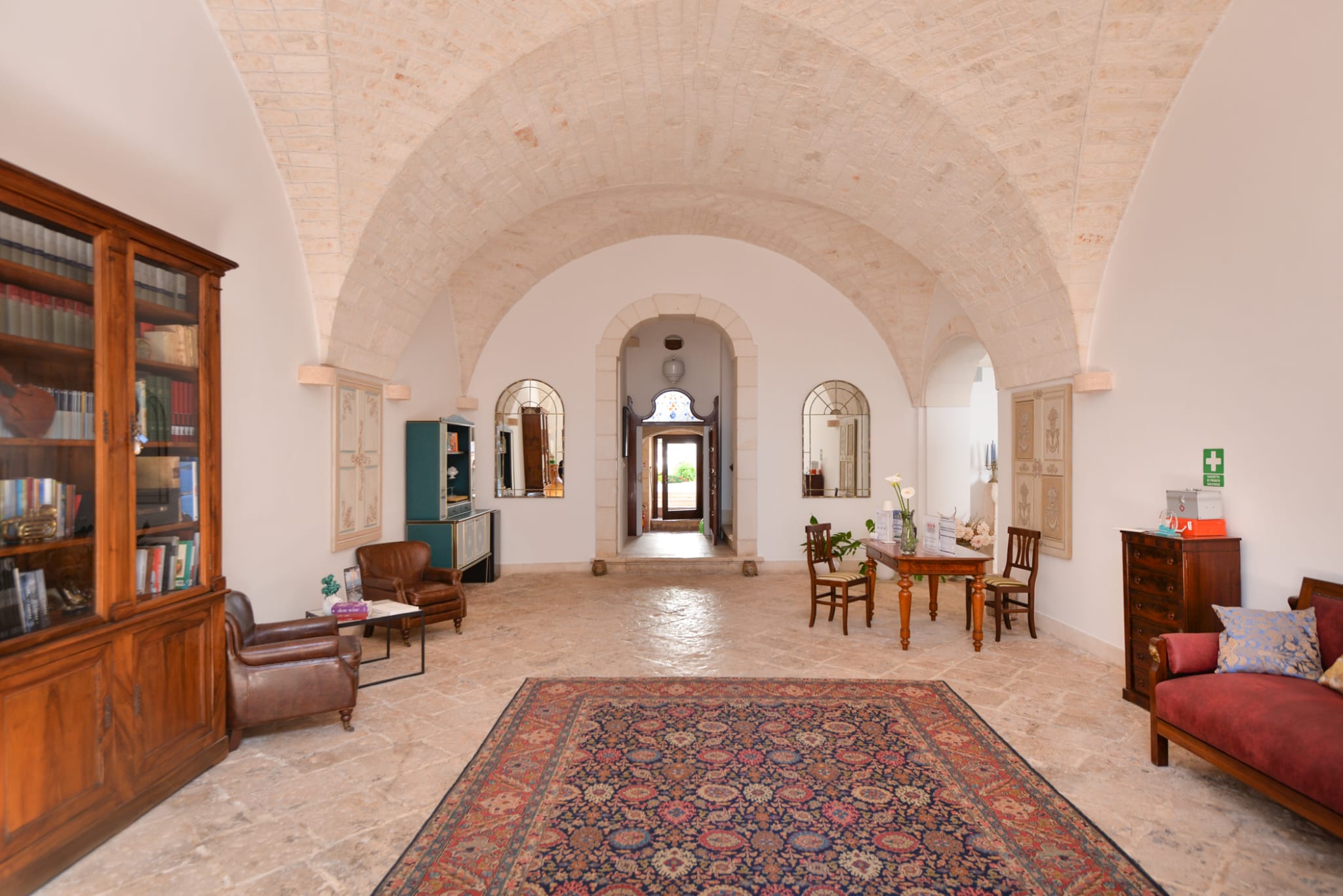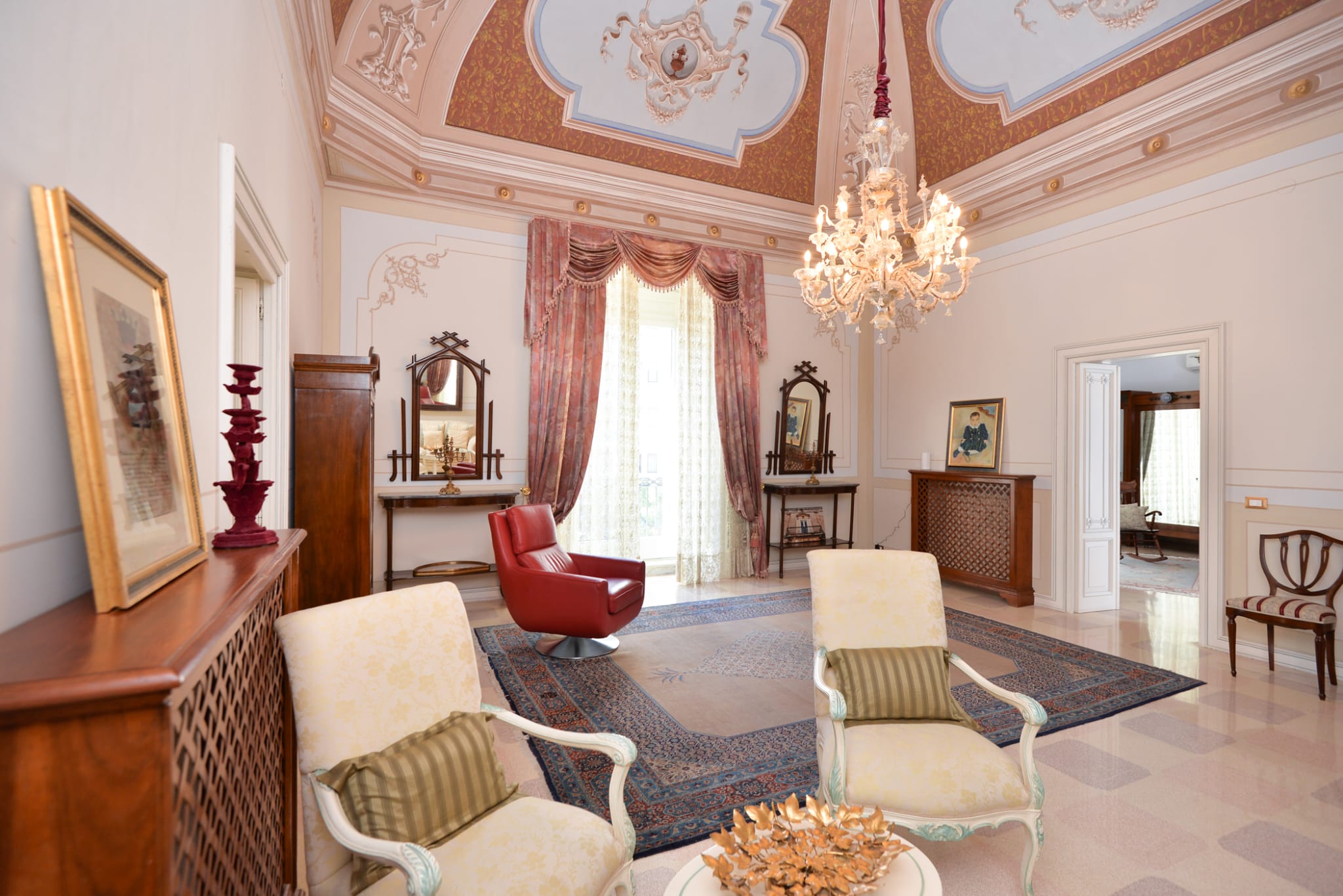WHERE ARE THE APULIAN CAVE PAINTINGS OF THE OSTUNI INLAND?
A warm afternoon wind, in the midst of ancient olive trees, more or less alive, white walls, red earth, farms, trulli, here and there antique litter bags of plastic, in the hinterland of Ostuni, San Vito dei Normanni, San Michele Salentino, of Serranova, of Cisternino. Very few machines in the sheep tracks on the side of the SS 16 or the SS 4-Appia, secular roads, or sheep tracks flanked by dry stone walls, some tractors, some rare bikes, often carried, even uphill, by black boys returning from the fields, young workers or other migrants in contemplation of the host country. And US? Romans, Umbrians, middle-aged, science, art or writers? What contribution do we give?
We went looking for the cave paintings of the ancient Byzantine churches or painted blades buried in structures from before or after the X-XII centuries, in which the Basilian monks typically founded those small artistic or prayer communities. The icon is not a framework. It is a prayer.
A long agony to look for such cave paintings in the sunny days of July! Very few around the depositaries of knowledge – the elderly – and disappeared or completely misinformed the youngsters, when questioned along the streets on fire from the morning.
These are the rock paintings described in the paragraph “The Rupestrian insediamentes of the Province of Brindisi" by Antonio Ghionna, Schena Editore, 2001. A hero of our time, as can be Franco Farina, artist and writer of Ostuni, who kindly allowed a video interview on his book dedicated to local cave paintings.
We decide to start looking for the Crypt of San Biagio, a few kilometers from Masseria Grottaminarda, in the territory of San Vito dei Normanni. Result? All abandoned, closed, barred, in restoration for years is whispered at half-mouth by the locals. No functional telephone number to which tourists and scholars can contact.
The farmhouses around, sun-drenched, cicale canterine to no end, fennel, tomatoes, basil, seem to make fun of us curious about “History” and tell us in silences that frescoes of the iconostasis and deesis of the crypt, remain unattainable: St. Christopher , the Prophet Daniel with the Evangelists, the Prophet Ezekiel, the Annunciation, the Flight into Egypt, the Presentation in the Temple, the Entrance into Jerusalem, Saints Andrew and John, St. Biagio, St. Demetrius, St. George, S Sylvester, St. John the Baptist, St. Clement. All this is in that Crypt of San Biagio.
For us, new painters of icons, not being able to see them is a bleak emptiness. How many more years will we have to wait? Whose responsibility? The Municipality, the Province (still!?), The Region, the Superintendency for Cultural Heritage, the Ministry of MIBAS? Who?
We move then to look for the nearby crypt of San Giovanni, where the fresco of the Archangel is kept. Result? No indication, nobody knows anything. A cooking sun is enough between the olive trees and white walls.
Then change course: we look for the crypt of San Nicola – which in theory would be in the district of the same name, but we turn around the hinterland of Serranova – 4 white houses without an open bar – the district Colombo. Result? No sign, no indication from the young, however, very rare, only a shy gesture from an old man without a voice and tired.
We change course, the sunset is approaching. We go inland beyond San Vito dei Normanni, up to Masseria San Giacomo, towards San Michele Salentino, in search of the rock settlement of Santa Maria di San Giacomo. They tell us that it is inside a private restaurant – cave paintings from the Byzantine period – closed in a closed restaurant! Only a picture of the internal church makes us dream.
Church built in 1600 above the old rock settlement, as is known from the records of the 1667 pastoral visit of Monsignor Carlo Personè, Bishop of Ostuni. On the place where the crypt was excavated there was an old farmhouse that in the time of Federico d’Aragona, was abandoned in 1409. When the people came back to live it, the crypt was rediscovered and it was built over the church, Antonio Ghionna.
The only cave paintings that we can see – managing to find the cell phone of a kind parish priest and his parish with the keys – were those of the cave of Madonna della Nova (open every Saturday before Sunday after Easter, in preparation of the homonymous procession), and it does not seem true.
Why do not the young people of Upper Salento reclaim these rocky churches? Of their age-old frescoes as are the olive trees?
Or must we always be middle-aged to react, to expose ourselves, to take punishment? They heard the FAI (which for example is well restructuring and managing the visits of Santa Maria to Cerrate, not far from Brindisi) or they heard Herity International to certify the buried goods, or they wrote refined projects, be they Europeans, of the World Bank, or of the Cassa Depositi e Prestiti.
And all again to work by combining history, science, art and archeology in well-mixed mixed groups, to explore this model of work in Smart Ancient Cities in Africa, as already proposed and published last year to combine new forms of energy, art and tourism sustainable in the ancient caravan villages; and I hope that among those 2500 registered readers there have been some young people from Puglia.
Just cry on young Pugliese people. Enough dry afternoons spent in the shopping centers of Lecce or Bari: the hypogea await us and geology, stratigraphy, archeology and restoration schools have to work together.



